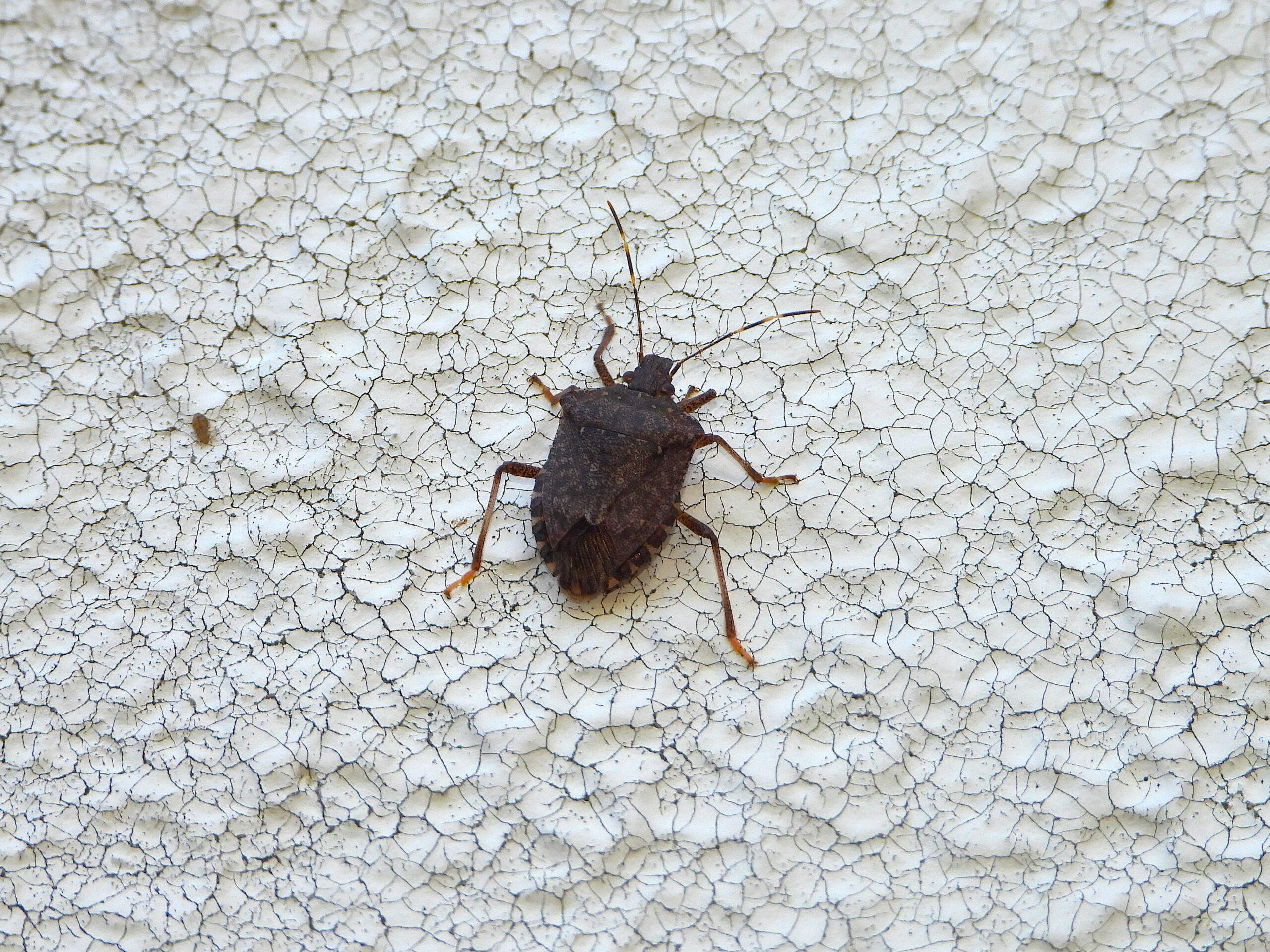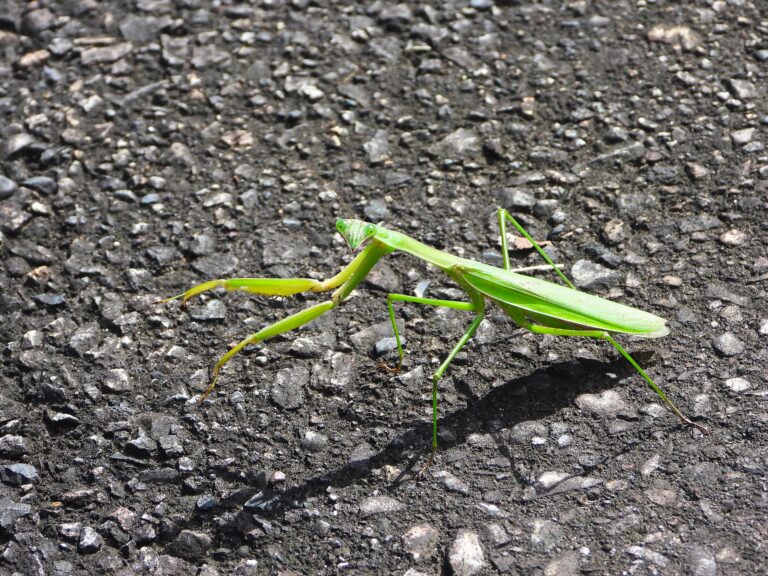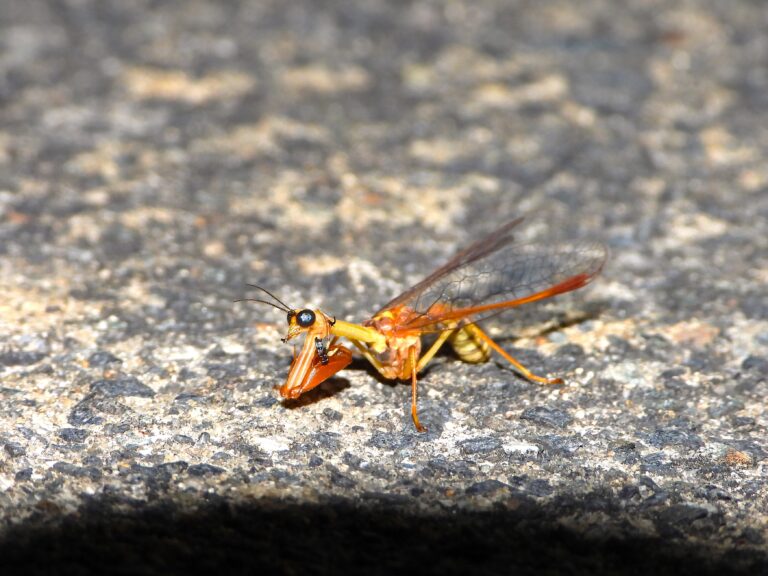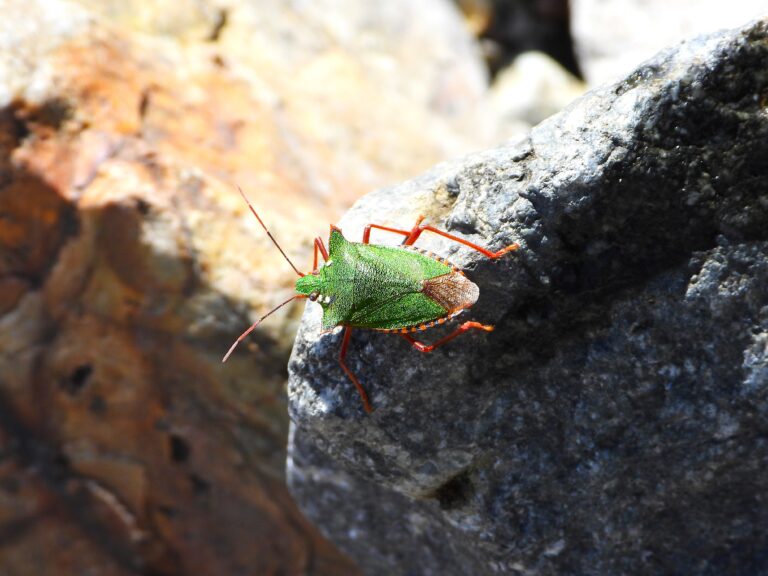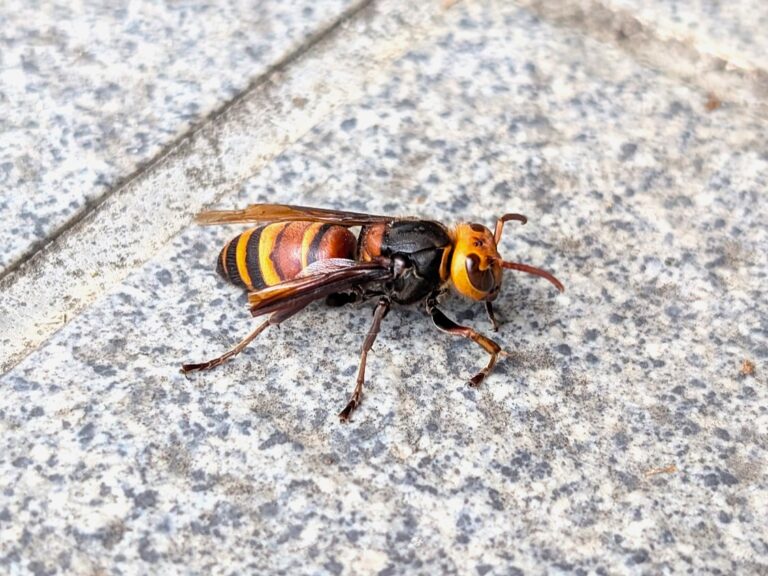Brown Marmorated Stink Bug (Halyomorpha halys) – Wildlife of Japan
Common across much of Japan, this native East Asian stink bug is infamous for its pungent odor and serious damage to fruit crops.
Introduction
The Brown Marmorated Stink Bug (Halyomorpha halys) is a common shield bug belonging to the family Pentatomidae.
It is widely distributed in East Asia including Japan, China, Korea, and Taiwan, and has become a major agricultural pest in many parts of the world after accidental introductions.
In Japan, it is familiar both as a fruit pest and as a seasonal nuisance insect, often entering homes in autumn to overwinter.
Appearance (Identification)
Adults measure about 13–18 mm in length and show a mottled brown coloration with irregular yellowish patches.
The antennae have pale bands on the 4th and 5th segments, and the abdomen edges (connexivum) are alternately pale and dark.
The shoulders are rounded, distinguishing it from some similar shield bugs.
There is noticeable individual variation in coloration and markings, especially between generations and regions.
Eggs are pale green and barrel-shaped, laid in clusters of about 30 on the underside of leaves.
Habitat & Distribution in Japan
This species is found throughout Japan, including Hokkaido, Honshu, Shikoku, Kyushu, and Okinawa, although population density tends to be lower in the north.
It inhabits orchards, farmland, forest edges, and even urban greenspaces.
In autumn, adults commonly appear on walls and windows of buildings located near fruit-growing or forested areas.
Behavior
Adults are active from spring to autumn, feeding and mating during warm months.
In late autumn, they seek out dark crevices, roof spaces, or cracks in buildings to overwinter in large aggregations.
This overwintering behavior is triggered by decreasing temperature and day length.
When disturbed, the bug releases a strong, pungent odor from its scent glands, a chemical defense that deters predators.
Diet (Hosts & Damage)
A highly polyphagous sap-feeder, the Brown Marmorated Stink Bug feeds on a wide variety of host plants.
In Japan, major hosts include persimmon, peach, pear, apple, soybean, and mulberry.
Feeding punctures cause surface dimples, internal corking, and discoloration, leading to severe economic damage in orchards.
Adults are responsible for most of the fruit injury, especially from July through September.
Life Cycle in Japan
Adults overwinter and resume activity around April.
Egg-laying begins in late May to early June, with eggs deposited on the underside of leaves in clusters of about 30.
Japan generally observes one generation per year, but two generations may occur in warmer regions such as western Honshu or Kyushu.
By autumn, new adults emerge and begin searching for overwintering sites, often aggregating in homes, sheds, and other sheltered spaces.
Conservation & Control
This species is abundant and not of conservation concern.
In Japan and its native range, egg parasitoid wasps, especially the samurai wasp (Trissolcus japonicus), naturally help regulate populations.
Pheromone traps are used for monitoring and control in both agricultural and urban settings.
When found indoors, it’s best to gently sweep them outside rather than crush them, as their odor can linger.
Author’s Impression
In autumn, these bugs often invade houses, appearing on walls, curtains, or near windows.
Because of their strong odor, they are generally disliked in Japan and considered one of the least welcome seasonal visitors.
Quick Facts
- Scientific name: Halyomorpha halys
- Family: Pentatomidae (stink bugs)
- Adult size: 13–18 mm
- Season: April–October (home invasions peak in autumn)
- Generations per year: Usually 1, occasionally 2 in warmer areas
SEO Set
- Focus keyphrase: Brown marmorated stink bug (Halyomorpha halys)
- SEO title: Brown Marmorated Stink Bug (Halyomorpha halys) – Wildlife of Japan
- Slug: brown-marmorated-stink-bug-halyomorpha-halys
- Meta description (125 chars):
Common across Japan, this East Asian stink bug feeds on fruit trees and invades houses to overwinter; ID tip: white-banded antennae.

